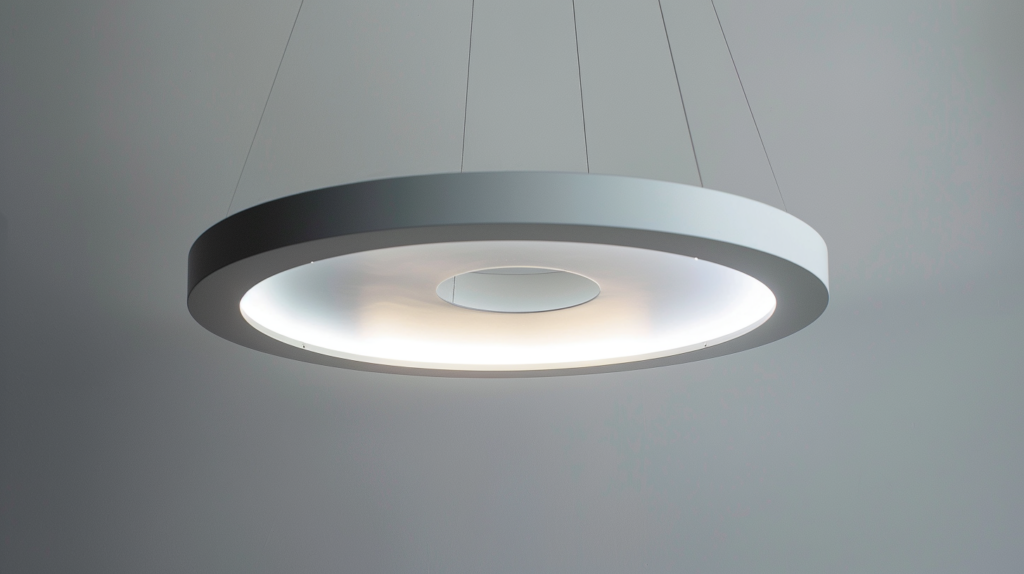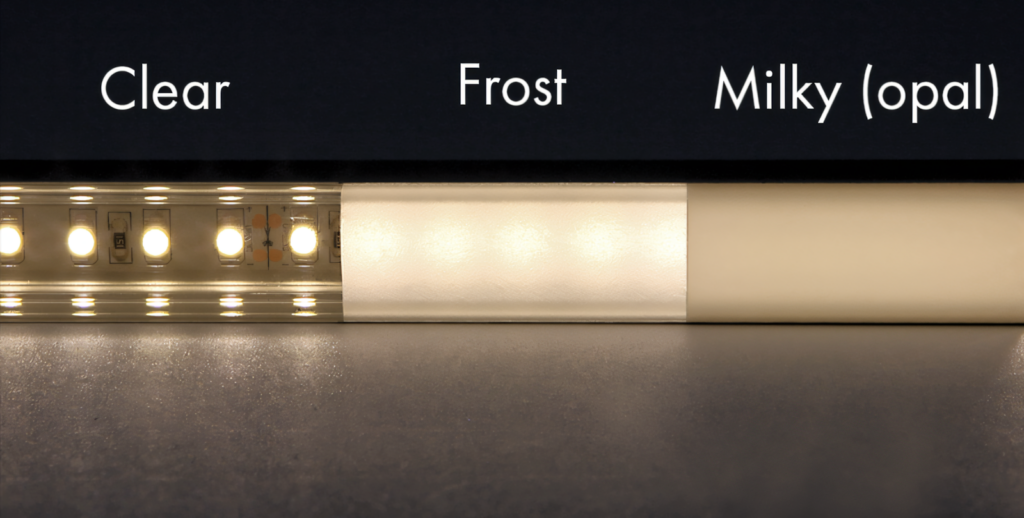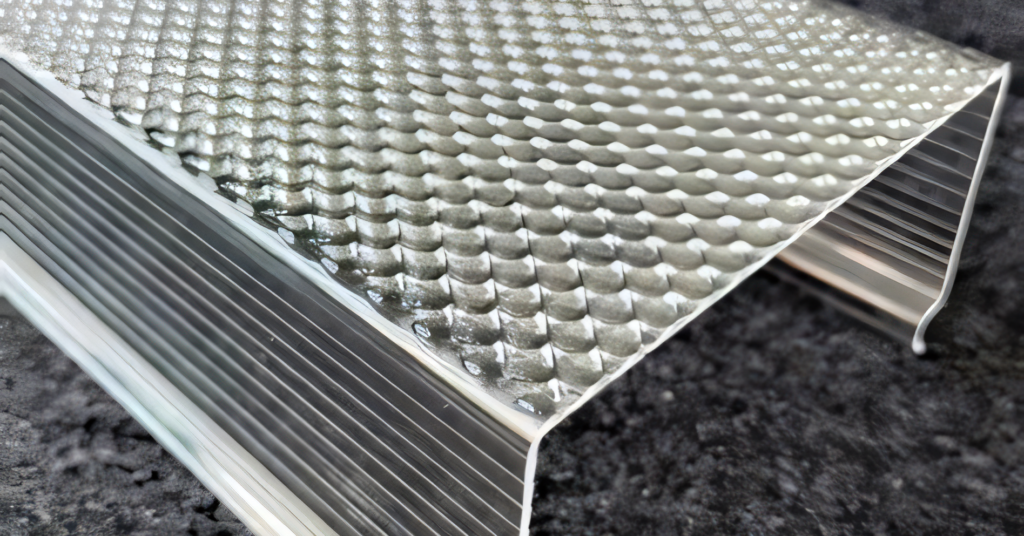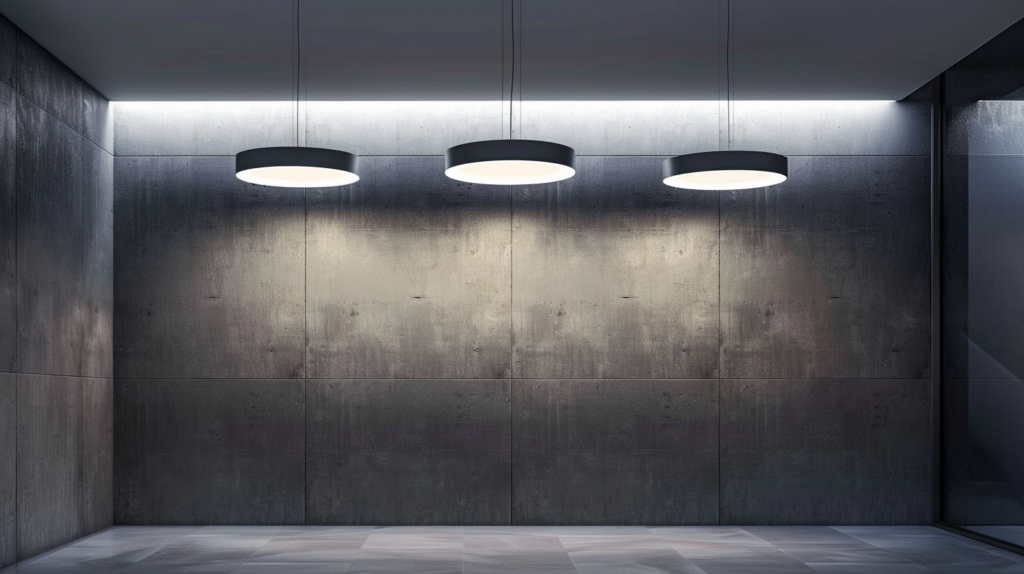Light Diffusers Types: Guide For Choosing the Right Lens for Precise Light Diffusion July 13, 2024 – Posted in: Lighting Information, Commercial Lighting, General Info, Office Lighting

Table of Contents
Let’s face it, picking the right lighting diffuser can be a real head-scratcher. We know the feeling – you want to get it just right, but there are so many options out there. Lighting diffusers are key players in shaping how light looks and spreads, from frosted types to fancy prismatic ones.
Don’t worry though, we’ve got your back. Our guide will walk you through the ins and outs of different diffuser materials, what makes them tick, and where they work best. So, ready to brighten up your knowledge on this tricky topic?
Key Points
- Lighting diffusers come in three main types: frosted, opal, and prismatic, each with unique properties for light distribution and glare reduction.
- Frosted diffusers scatter light rays to create a soft glow, while opal diffusers produce a smooth, uniform illumination that works well with LED strips.
- Prismatic diffusers use geometric patterns to control light, making them great for offices and retail spaces.
- When choosing a diffuser, consider factors like light quality, application needs, durability, fire safety, and compatibility with LED technology.
- The right diffuser can transform harsh light into a pleasing ambiance, making it an important part of any lighting setup.
Types of Lighting Diffusers

Lighting diffusers come in various forms to suit different needs. We’ll explore three main types: frosted, opal, and prismatic diffusers, each with unique properties for light distribution.
Frosted Diffusers

Frosted diffusers are a popular choice for softening light. These diffusers feature a textured surface that scatters light rays, creating a gentle, even glow. Frosted diffusers are typically made from polycarbonate or acrylic materials, known for their durability and light-transmitting properties.
They work well with LED strips, linear lighting, and panels, helping to reduce glare and hotspots while maintaining good light output.
Frosted diffusers come in various densities to suit different lighting needs. They’re great for both residential and commercial spaces, providing a balance between light diffusion and transmission.
These versatile diffusers can transform harsh light sources into pleasing, ambient illumination, making them ideal for offices, homes, and retail environments.
Opal Diffusers

Opal diffusers are popular choices for creating soft, even lighting. These diffusers use a milky white material that scatters light in all directions, producing a smooth, uniform glow.
We’ve found that opal diffusers work well in both residential and commercial spaces, offering excellent light transmission while reducing glare. They’re particularly effective with LED strips, helping to blend individual diodes into a continuous line of light.
Our experience shows that opal diffusers come in various densities, allowing for different levels of light diffusion. Higher density opal diffusers provide more softening but may reduce overall light output.
Lower density options offer a balance between diffusion and brightness. These versatile diffusers are available in different shapes and sizes, making them suitable for a wide range of lighting fixtures and applications.
Prismatic Diffusers

Prismatic diffusers offer a unique approach to light distribution. We’ve seen these optical marvels in action, creating stunning visual effects in various lighting projects. They use precisely engineered surfaces with small, repeating geometric patterns to control and shape light.
This design allows for efficient light transmission while reducing glare and hot spots.
Our experience with prismatic diffusers has shown their versatility in different applications. From office spaces to retail environments, these diffusers excel at creating uniform illumination.
They’re particularly effective with LED light sources, helping to spread the light evenly and enhance overall brightness. We’ve found that prismatic diffusers often come in a wide variety of styles, allowing for customization in both function and aesthetics.
Choosing the Right Diffuser
Selecting the ideal diffuser involves assessing your specific lighting needs. We consider factors like light quality, application, and desired ambiance to guide your choice.

Considerations for Light Quality and Application
Choosing the right lighting diffuser involves careful consideration of light quality and application requirements. We’ve compiled a list of key factors to help you make an informed decision:
- Light distribution: Evaluate how evenly the diffuser spreads light across the intended area. Opal diffusers often provide a more uniform light distribution compared to clear or prismatic options.
- Glare reduction: Consider the diffuser’s ability to minimize harsh glare, especially in office or retail environments. Frosted diffusers excel at reducing glare and creating a softer light.
- Color temperature: Ensure the diffuser doesn’t alter the intended color temperature of your light source. Some diffusers may slightly warm or cool the light output.
- Light transmission: Assess the percentage of light that passes through the diffuser. Higher transmission rates maintain brightness, while lower rates create a more subdued effect.
- Durability: Choose a diffuser material that withstands environmental factors like humidity, temperature changes, and UV exposure. PMMA (acrylic) diffusers offer excellent durability for many applications.
- Fire safety: For commercial or public spaces, select flame-retardant diffusers that meet local building codes and safety standards.
- Aesthetics: Consider how the diffuser complements the overall design of your space. Prismatic diffusers can add visual interest, while opal diffusers offer a clean, modern look.
- Energy efficiency: Opt for diffusers that maximize light output while minimizing energy loss. High-quality diffusers can help reduce the number of luminaires needed.
- Maintenance: Choose diffusers that are easy to clean and maintain. Smooth surfaces generally collect less dust and are simpler to wipe down.
- Customization options: Look for diffusers available in various sizes and shapes to fit your specific lighting fixtures and space requirements.
- Cost-effectiveness: Balance initial costs with long-term performance and energy savings. Higher-quality diffusers may offer better value over time.
- Application-specific needs: Consider unique requirements for your setting, such as food-safe materials for kitchen areas or impact-resistant options for high-traffic zones.
- Light control: Evaluate how well the diffuser directs light where it’s needed. Some diffusers offer controlled beam angles for targeted illumination.
- Compatibility with LED technology: Ensure the diffuser works well with LED light sources, optimizing their efficiency and lifespan.
- Environmental impact: Consider eco-friendly options made from recyclable materials or those with minimal environmental footprint during production and disposal.
Conclusion
Lighting diffusers play a crucial role in creating the perfect ambiance. We’ve explored various types, from frosted to prismatic, each offering unique benefits. Understanding these options helps you make informed choices for your lighting needs.
The right diffuser can transform harsh light into a soft, pleasing glow. With this knowledge, you’re now equipped to enhance your space with optimal lighting solutions.
FAQs – Lighting Diffusers
What are lighting diffusers?
Lighting diffusers are translucent materials used to soften and distribute light from LEDs, lamps, or fixtures. They create a soft glow and evenly spread illumination, reducing glare and harsh shadows.
What types of diffusers are available for LED strip lights?
LED strip light diffusers include LED profiles, channels, and covers. These come in various sizes and materials like methacrylate or microprism. They help create a uniform light output and protect the LEDs.
How do diffusers affect the optical properties of light?
Diffusers alter light’s optical properties through Lambertian scattering. This process makes radiance independent of viewing angle, resulting in a softer, more evenly distributed light. It’s ideal for creating ambient lighting in various applications.
Can diffusers be used with different light sources?
Yes, diffusers work with multiple light sources. They’re compatible with LEDs, traditional lamps, and even ultraviolet light. Each type of diffuser is designed to optimize the specific light source’s output.
What factors should I consider when choosing a diffuser?
Consider the light source, desired effect, and application. Factors include the level of diffusion needed, material durability, and aesthetic preferences. These questions will help you decide on the best diffuser for your lighting project.
Where are lighting diffusers typically used?
Lighting diffusers find applications in various settings. They’re used in office light panels, LED walls, light boxes, and projector screens. Diffusers are an excellent choice for creating soft, even illumination in both residential and commercial spaces.
I have been the project manager for Modern.Place since early 2016, spending three of those years working overseas on the manufacturing & procurement side of the LED lighting industry. Constantly learning and passing on knowledge to others while excited for what the lighting industry will involve into next.

